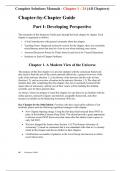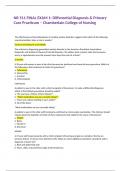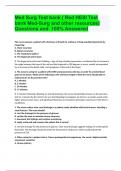Exam (elaborations)
Solutions Manual for The Cosmic Perspective, 10th Edition by Jeffrey O. Bennett | Complete Study Guide
- Module
- Institution
Solutions Manual for The Cosmic Perspective, 10e 10th Edition by Jeffrey O. Bennett, Megan O. Donahue, Nicholas Schneider | Complete Study Guide with all chapters (Chapter 1 - 24) included. A Modern View of the Universe Discovering the Universe for Yourself The Science of Astronomy S1. Celest...
[Show more]












